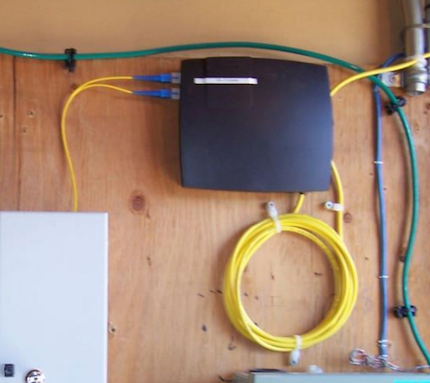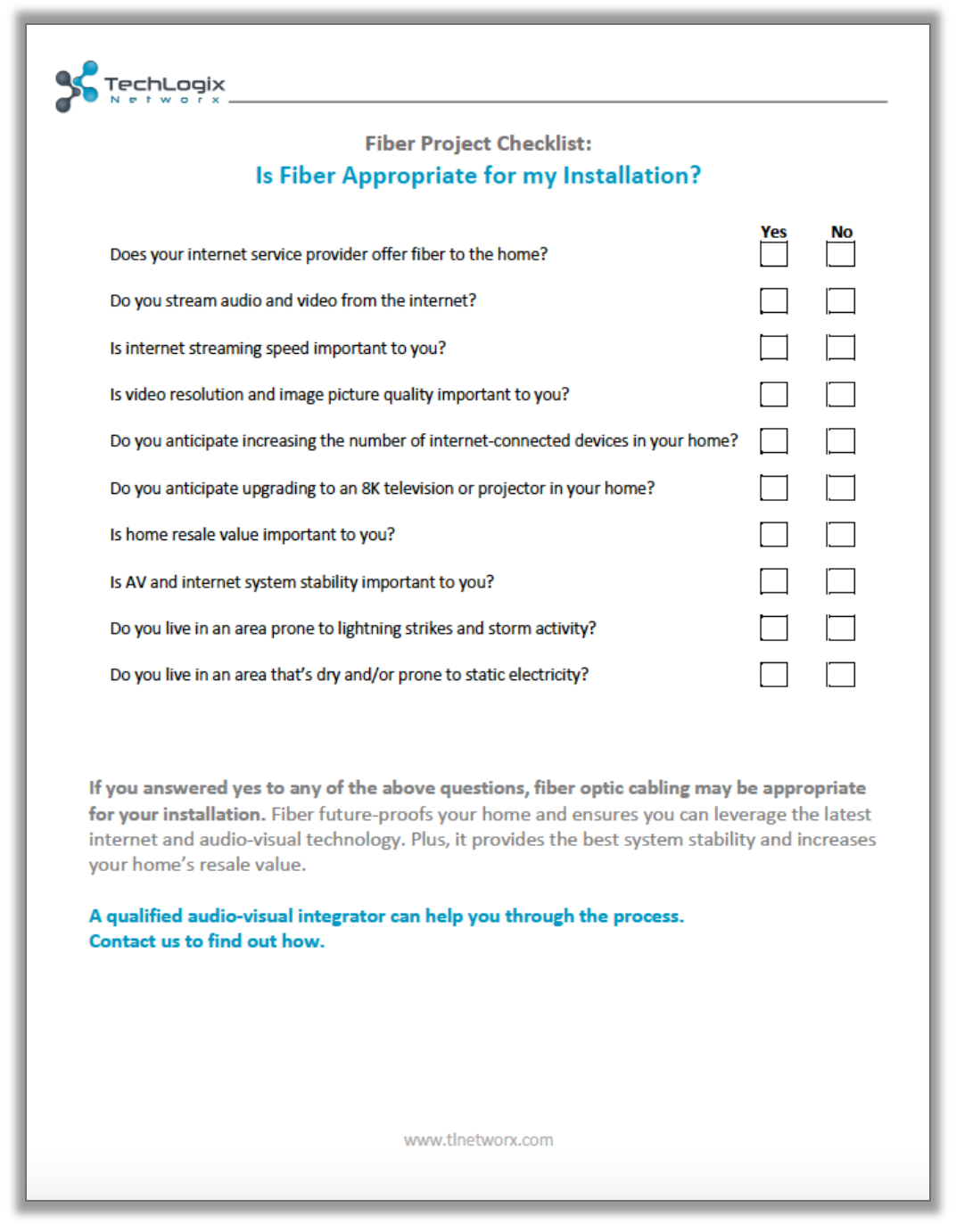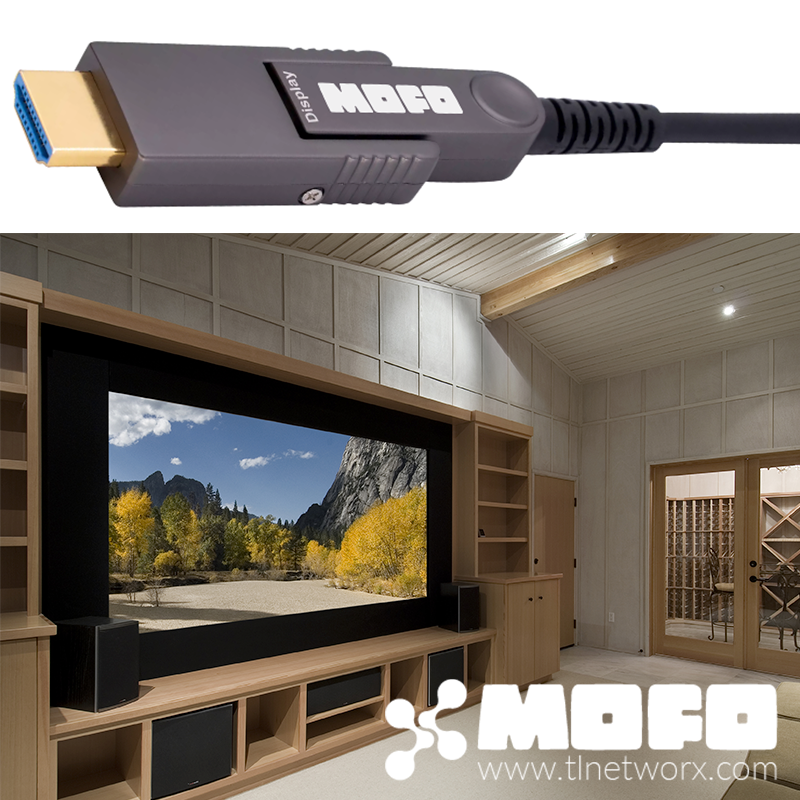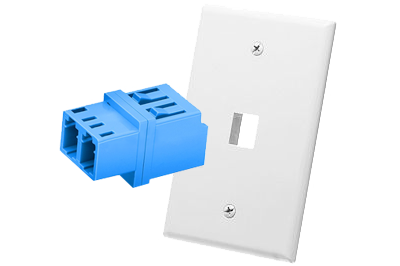Demarc Wiring: Common Applications with Fiber

We often get asked how to wire a demarc with fiber optic cabling. Unfortunately, there isn't a single answer or a dominant installation example -- several variables combine to determine the best way to integrate fiber into a new or retrofit installation.
This article will examine seven different integration patterns, including the reasoning behind each configuration. However, before we begin it's important to understand the terminology and technology we will be using.
Most importantly, one must understand that the demarc (or point of demarcation) is the area where the public network connects with the private network. It divides the responsibility between the telecom provider or ISP (internet service provider) and the individual home or business owner. In a residential internet application, the demarc is typically where cable from the street terminates into a modem. In some cases, the demarc must be extended and this article will explore the necessary wiring.
It is also important to understand the different cabling and connection technologies that are common in demarc wiring. The table below outlines the terminology we'll be using:
| Copper | Copper-based cabling; can be either twisted pair or coax |
| Fiber | Fiber optic cabling; either single mode or multimode |
| ISP | Internet service provider; the public utility providing internet service |
| Media Converter | A device which adapts cabling infrastructures; a media converter can be used to adapt fiber cabling to copper cabling (and vice versa) or single mode fiber to multimode fiber (and vice versa) |
| TP | twisted pair cabling; typically Cat 5e or Cat 6 |
Finally, it's important to understand that most electronics do not have native fiber optic ports directly on them -- they have SFP ports. SFP (small form-factor pluggable) ports accept an SFP module that provides LC or SC-style connection capabilities. By using an SFP port and SFP module, electronics can be adapted to different types of fiber cabling depending on the application.

Application 1 focuses on a fiber to fiber installation. The ISP provides a fiber cable to the demarc (typically single mode fiber) and the modem supports fiber in and fiber out connections. The modem connects to the network switch via fiber optic cabling.
This is an ideal installation for high network speeds and bandwidth capabilities.

Application 2 focuses on a fiber to copper installation. The ISP provides a fiber cable to the demarc (typically single mode fiber) and the modem supports fiber in and twisted pair out connections. The modem connects to the network switch via twisted pair cabling.
This tends to be a very common application, though it's not ideal. The fiber trunk from the ISP does support high network speeds and bandwidth capabilities, but the conversion to a copper infrastructure will limit signal flow rates. Ideally, the copper infrastructure will be replaced by fiber (as in Application 1).

Application 3 is very similar to Application 2 except that the fiber line is being extended from the modem and then converted via a media converter. This application is common in systems where the modem supports fiber in and fiber out connections, but the network equipment is twisted pair based.
The media converter can be located at the demarc or remotely (closer to the network equipment).

Application 4 focuses on a copper to fiber installation, which also tends to be a very common application.
The ISP provides a copper cable (often coax) to the demarc and the modem supports copper in and twisted pair out connections. The modem connects to the network switch via twisted pair cabling and the network switch converts the signals to fiber (typically via SFP ports and SFP modules).
This application is common because new homes are often wired with fiber optic cabling and support fiber based network equipment; however, the ISP grid is still copper based.

Application 5 is very similar to Application 4 except that the twisted pair line is being extended from the modem and then converted via a media converter. This application is common in systems where the modem supports copper in and twisted pair out connections, but the network equipment is fiber based.
The media converter can be located at the demarc or remotely (closer to the network equipment).

Application 6 focuses on extending the demarc or point of demarcation. Typically, the fiber cable from the ISP (usually single mode cable) is dead-ended at the demarc and a separate contractor must extend the line to a different location. This application is common in MDUs (multi-dwelling units) and new construction.
It is important to note that this application requires the same type of fiber to be coupled (i.e., single mode fiber to single mode fiber). You cannot use a coupler to connect single mode fiber to multimode fiber and vice versa.

Application 7 is similar to Application 6; however, the single mode fiber is being converted to multimode fiber. To effectively accomplish this, a fiber-to-fiber media converter must be used. The input SFP port supports the single mode fiber connection and the output SFP port supports the multimode fiber connection.
A Final Note
These seven applications are by no means the only infrastructure configurations you'll encounter; however, they tend to be the most common. The best practice is to integrate as much fiber as possible, as it will provide the fastest connection between devices and future-proof for tomorrow's technology. Copper-based ISP networks will be replaced and homes limited to twisted pair cabling in the walls won't be able to seamlessly experience ultra-high speed networks and 8K video content.




Comments
BruceW —
This is a very useful article! It puts the different connections patterns in simple terms and cut out a lot of confusion for me.